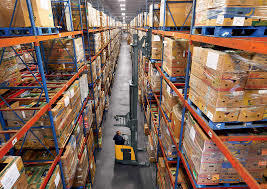3 Things to Check Before Purchasing Used Pallet Racking

Used pallet racking is incredibly cost-effective and even good for the environment, as it reduces the amount of resources and emissions required to produce a new racking unit. However, if you have plans to order secondhand shelving from an industrial equipment dealer, be sure check the condition of the racking prior to purchasing. This is mainly because used racking can create hazardous situations in your warehouse if it is in poor condition. In order to determine if the used racking is conducive to a safe working environment, it is important to look at the amount of rust on the unit, damage to any beams, and the integrity of the uprights. Read on as we explain when to accept and when to reject a racking system by evaluating these three factors.
[CUTOFF]Rust
A rusty component should always be evaluated to ensure that the rust does not affect the structural strength of the used racking.
When to Accept:
Used pallet racking can accumulate surface rust if it is exposed to humid environments or the paint fails. As long as you don’t mind the lackluster aesthetics of it, it is okay to buy pallet racking with surface rust, as it has no impact on the structural integrity of the racking.
When to Reject:
While a little surface rust is harmless, a racking unit that has major pits and holes in it from advanced rust could cause serious accidents in your warehouse. Advanced rust is oxidation below the surface, which means the steel’s strength is compromised. Also, in some cases, rust patches form around points where repairs have been made and could indicate the quality of that repair.
Damaged Beams
Damaged beams are fairly easy to identify. If you are inspecting a delivery of used pallet racking, you should check to ensure that they are well-stacked and securely bundled. This usually makes it easier to spot a bent beam.
When to Accept:
Minor dents in the face of a beam will not impact its weight capacity. Like surface rust, these small dings are simply cosmetic.
When to Reject:
Deep dents (an inch or greater) or dents on the rolled corners can pose quite the safety risk. Dents in the corners can alter the beam shape and angle of connection to the upright, which could significantly affect the pallet racking’s ability to support heavy items.
Compromised Uprights
Uprights carry all of the weight of your racking system. Unfortunately, they are also extremely prone to forklift impacts. Twists, dents, and broken welds are all common issues with used racking uprights, but some damage is a no-go in terms of reusability.
When to Accept:
If your upright posts do not deflect more than a half inch in any direction and they have all of their footplates and cross-struts, you are good to go.
When to Reject:
Uprights with sheared steel or broken welds are unsafe. Also, if you are looking to purchase a refurbished component, be sure that there are no missing cross braces or long distances of unsupported posts at the top or bottom. Bracing that is properly spaced is crucial for strength.
If you are looking for a trustworthy used pallet racking dealer or you need a professional opinion on what type of pallet racking is best for your warehouse space, contact us at Darr Equipment today. We are happy to provide you with a wide array of used shelving and custom warehouse solutions to satisfy all of your material handling needs.